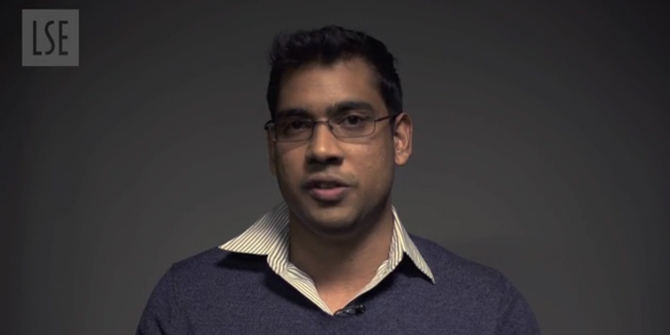Mark Noort argues that to advance the understanding and relevance of ‘safety culture’ the field needs to integrate four perspectives on the nature of culture.
 Safety culture is a concept used for monitoring and learning about safety performance in organisations that deal with operational risk. The concept has been around since the 1980s following the Chernobyl nuclear disaster, and has been proven useful for improving levels of safety across various countries and high-risk industries (Clarke, 2006). Yet, despite of this, the safety culture literature suffers from a relative lack in cultural theorising and application of cultural methods (Noort, et al., under review). Hence, here I argue that safety culture should view culture as i) resulting from biological adaptations to risk, ii) a sharing of beliefs on safety, iii) a variable of inter-group difference and iv) finally an organisational characteristic predicting organisational outcomes.
Safety culture is a concept used for monitoring and learning about safety performance in organisations that deal with operational risk. The concept has been around since the 1980s following the Chernobyl nuclear disaster, and has been proven useful for improving levels of safety across various countries and high-risk industries (Clarke, 2006). Yet, despite of this, the safety culture literature suffers from a relative lack in cultural theorising and application of cultural methods (Noort, et al., under review). Hence, here I argue that safety culture should view culture as i) resulting from biological adaptations to risk, ii) a sharing of beliefs on safety, iii) a variable of inter-group difference and iv) finally an organisational characteristic predicting organisational outcomes.
‘Culture’ has been studied across disciplines such as social psychology, sociology and anthropology and a vast number of definitions and typologies have been proposed (Allaire & Firsirotu, 1984). For example, a typical definition is ‘the way do things around here’. Arguably, this variety is partly due to the wide-ranging aims and goals of these disciplines, and a unified definition remains absent. However, this variety benefits the understanding of culture because it offers a wider perspective on the way that culture may impact on organisational outcomes such as safety or wellbeing. At least four approaches may further the understanding of culture in safety culture, each of which is essential for getting a full understanding of the workings of culture. These four domains of culture are the following:
1. Biological
The first approach to culture argues that culture is a product of adaptations to the brain evolved for learning. Culture is understood as fundamentally social, but nevertheless rooted in the biological functions that enable learning and sociability (Boyd & Richerson, 1985). As Henrich (2011) put it, “culture, cultural transmission, and cultural evolution arise from genetically evolved  psychological adaptations for acquiring ideas, beliefs, values, practices, mental models, and strategies from other individuals by observation and inference.” This process develops functions for understanding other humans (e.g., shared intentionality) and because adaptations increase in complexity over time (Tennie et al, 2009) complex cultural phenomena may emerge such as morality, religion (Boyer, 2000), and, arguably, safety culture. Such mental functions for culture may have developed genetically in response to concrete risks faced in the evolutionary past (cf., Barkow et al, 1992), providing early humans with the mental adaptations for information processing and learning. This benefitted the human species by increasing the likelihood of survival and the manipulation of the environment through tools. For example, to survive humans needed to be able to recognize hazardous patterns in the wild (e.g. a lion in grass), which today may function to detect and prevent near misses in organisations that deal with safety (e.g. air traffic management).
psychological adaptations for acquiring ideas, beliefs, values, practices, mental models, and strategies from other individuals by observation and inference.” This process develops functions for understanding other humans (e.g., shared intentionality) and because adaptations increase in complexity over time (Tennie et al, 2009) complex cultural phenomena may emerge such as morality, religion (Boyer, 2000), and, arguably, safety culture. Such mental functions for culture may have developed genetically in response to concrete risks faced in the evolutionary past (cf., Barkow et al, 1992), providing early humans with the mental adaptations for information processing and learning. This benefitted the human species by increasing the likelihood of survival and the manipulation of the environment through tools. For example, to survive humans needed to be able to recognize hazardous patterns in the wild (e.g. a lion in grass), which today may function to detect and prevent near misses in organisations that deal with safety (e.g. air traffic management).
2. Social-constructivist
The second approach to culture understands culture as a process for social learning through creating meaning and sharing understanding. This is the subject of social-constructivist accounts to culture. This approach holds that people understand objects in the world differently due to different pressures (e.g., Antonsen, 2009), but can nevertheless come to a shared understanding. The process via which they do this is intersubjectivity (Gillespie & Cornish, 2010), which is based on language and actions. A seminal book in this approach is Berger and Luckmann’s (1967) Social construction of Reality. The authors argue that: 1) meaning and knowledge is created socially, 2) meaning and knowledge frames action, and that 3) action reshapes meaning, in a feedback loop. For example, by discussing beliefs in work team (e.g., on safety protocols), organisational practices are changed (‘objectified’), which in turn leads to a wider adoption of the ideas underpinning the safety protocol. Sharing understanding on safety issues has thus two functions (Gillespie, 2008): to provide a shared frame of reference for communicating, and to enable group coordination and a shared identity around safety.
3. Cross-cultural
The third approach takes the beliefs and practices within a group and compares these to another group in order to draw conclusions about the nature of culture. Cross-cultural models have been developed that describe how groups (e.g. nations, organisations) have different beliefs, norms and/or affordances on how to relate to other people. For example, Markus and Kitayama (1991) showed that people in some countries regard themselves as more independent from friends and family than people in other countries. Similarly, cross-cultural differences have been documented in cognitive processing styles (Nisbett et al., 2001) and national cultural values (Hofstede, 2010). Such differences have been argued to stem from migration patterns, national education curricula and the long-term philosophical traditions of a nation. Cross-cultural differences are important for safety  culture. We have indicated that a reasonable proportion of variation in safety culture is explained by cross-cultural differences on Hofstede’s dimensions of culture (Reader, et al., 2015). For example, when people in a country feel uncomfortable with ambiguity they reported a more unfavourable collaboration on safety issues. Cross-cultural research may thus explain safety culture by values that shape organisational practice on safety.
culture. We have indicated that a reasonable proportion of variation in safety culture is explained by cross-cultural differences on Hofstede’s dimensions of culture (Reader, et al., 2015). For example, when people in a country feel uncomfortable with ambiguity they reported a more unfavourable collaboration on safety issues. Cross-cultural research may thus explain safety culture by values that shape organisational practice on safety.
4. Pragmatic
The final approach to culture emphasizes that groups collaborate to accomplish tasks. It thus focusses on how groups set up organisational structures and systems that create organizational outcomes. It is within this approach that you most often find culture referred to as an organisational facet, for example ‘achievement culture’, ‘power culture’, ‘conformity culture’, or indeed ‘safety culture’. Schein (1990) argued that culture can be split into three level with varying visibility. First, and most visible, artefacts are the tangible organisational structures and processes that shape and constrain action on a day-to-day base. These are based on espoused values, which constitute organizational strategies, goals and philosophies. Finally, he described basic underlying assumptions, which are unconscious, taken for granted beliefs, perceptions, thoughts, and feelings upon which values are build. Because assumptions are somewhat invisible, individuals and the organisation may need external consultants to uncover these. Of the levels of culture, artefacts are most frequently investigated because they are most easily associated with organisational outcomes. This research focusses on organisational systems and structures that enable groups to behave safely using a range of tools, such as equipment (e.g., IT, buildings) and staffing (e.g., HR practices).
Safety culture research is rare to acknowledge cultural theories, and an imbalance seems to exist towards the pragmatic take on culture. However, for improving safety it is vital that we fully comprehend the cultural mechanisms that drive safety performance. Taking these four approaches I would thus argue that academics and practitioners alike take into account that safety culture is:
- Grounded in biological human functions for learning and sense-making.
- Based on meanings that are created socially and shape action.
- Variable across countries and groups.
- Shaping outcomes for organizations as assumptions, values and artefacts.
Mark Noort, Msc is a principal analyst at the Department of Social Psychology at the London School of Economics. His research and consultancy work investigates human factors and safety culture in the European Air Traffic Management industry. He holds an MSc in Social & Cultural Psychology from LSE, and a BSc (with distinction) in Psychology from Utrecht University where he was one of two (out of 600) to receive a distinction in combination with a degree from the highly selective Von Humboldt College honours programme. This blog is his last contribution before moving on from LSE.






Interesting blog Mark. Looking forward to reading your paper when it’s published.